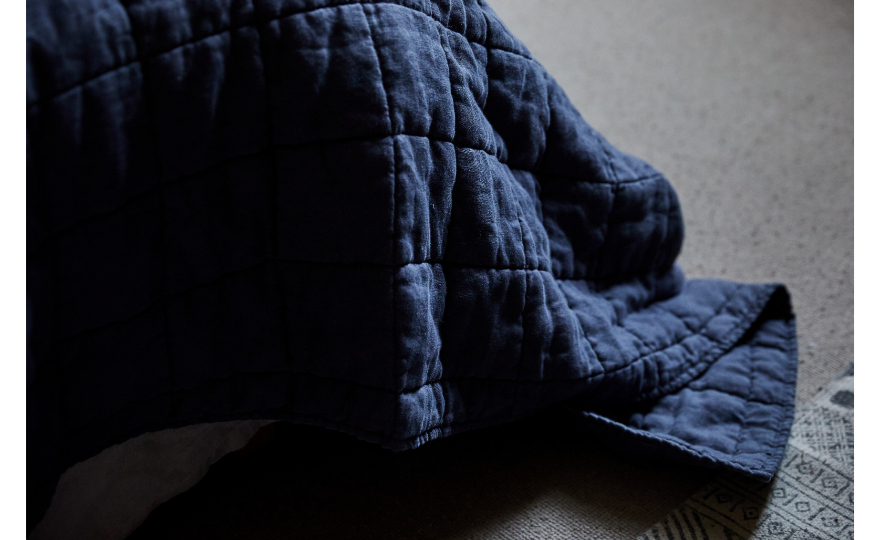365-DAY GUARANTEE | FREE SHIPPING | FREE RETURNS
365-DAY GUARANTEE | FREE SHIPPING | FREE RETURNS
365-DAY GUARANTEE | FREE SHIPPING | FREE RETURNS
Your Cart is Empty
Quilts are soft and comfortable, and they also make a beautiful bedding choice for any style bedroom. If you’re wondering how to choose the right batting for a quilt, there are a lot of options available. The right quilt batting can often mean the difference between a thick, warm quilt and one that’s more decorative in nature. With so many quilt batting options out there, it can be difficult to know which one is the right option for you. Our guide is here to help you navigate the world of quilt batting, so read on to learn more.
The term quilt batting refers to a layer of insulation that is placed between the top and bottom layer of the quilt and its patchwork. When you’re looking for the right batting, the option you choose hinges on several factors including things like the batting’s thickness or loft, and the type of material that is used. For example, low loft batting would add a thin layer to your bed, while high loft batting is typically warmer and thicker overall. The quilt top material can also determine how warm and soft the quilt is overall. When the quilt is made, the quilting stitches hold the batting in place, so they don’t bunch up or move around.




What is the best batting to use for quilts? There are several factors to consider when you choose the right batting for a quilt including the thickness and loft, the fiber content, and the many characteristics of different batting materials.
The batting loft or thickness is a key factor in how the quilt looks and feels. Low loft batting is usually added when making a craft quilt that can be used as a wall hanging or table decoration. Most low loft batting is approximately 1/8-inch thick or less to help create more detail and definition in the stitching details. Cotton batting tends to be lower loft, while polyester batting tends to be higher loft (or thicker). Some people prefer low loft batting for summer quilts to keep them cooler at night, too.
The fiber content or material also plays a role in choosing the best quilt batting for your needs. Here are some common batting materials, their characteristics, and their pros and cons.

Choosing the right types of batting can also play a role in your general comfort and temperature regulation while you sleep. Higher loft materials and thick batting like pure cotton, polyester, and cotton poly blends tend to be warmer, while thinner batting like silk and bamboo is lighter and cooler, making them a good option for a summer quilt. If you tend to sleep hot or deal with night sweats, look for the most breathable material possible when you choose quilt batting.
The warmth-to-weight ratio measures the insulating power of the batting and is calculated by dividing the warmth of the material by its weight. Higher ratios mean that the material is more insulating while still having less bulk and weight overall. When you choose batting for your quit, make sure it will keep you warm or cool based on the climate or the season.
How do I know what batting to use? As you shop for bed quilts or the right batting for your quilting projects, look for a fiber content that will last through multiple washings. Poly batting and poly blend batting tend to be the most durable and seem to hold their loft and shape the best. A quality cotton blend is another good option that resists shrinking while also maintaining more breathability. Bamboo works well with machine quilting but is also much more delicate so it may not hold up as well as wool or polyester. Needle punched batting felts the batting together using thousands of tiny needles. This creates a lower loft, but it’s also much denser and stronger than traditional hand quilting methods and materials.
Always follow the care instructions on your quilt to ensure that you’re maintaining your quilt and batting in the best way possible. Some may need special care or detergents, while others might need to be line-dried to prevent shrinking. Always make sure that you wash your quilt before you put it in storage during the warmer months. Bamboo tends to shrink in the wash, and wool batting typically must be washed by hand. If convenience is a priority, choose quilts with cotton, polyester, or a blend of the two for easy care.
Choosing batting can be tricky, but if you have allergies and other sensitives, it’s important to select options constructed of hypoallergenic materials, such as organic cotton and bamboo. Look for high quality batting made of natural fibers rather than synthetics or synthetic blends. Our linen quilts are not only breathable and moisture-wicking, but they’re also naturally hypoallergenic so you won’t need to worry about skin, eye, nasal, or lung irritation while you sleep.

Knowing how to choose batting for a quilt can make all the difference in terms of warmth and comfort. Keep each type of batting in mind when you shop or when you’re planning to make your own quilt project. At Or & Zon, we offer a beautiful variety of stonewashed linen quilts and other eco-friendly bedding designed to enhance your sleeping space and your life.
